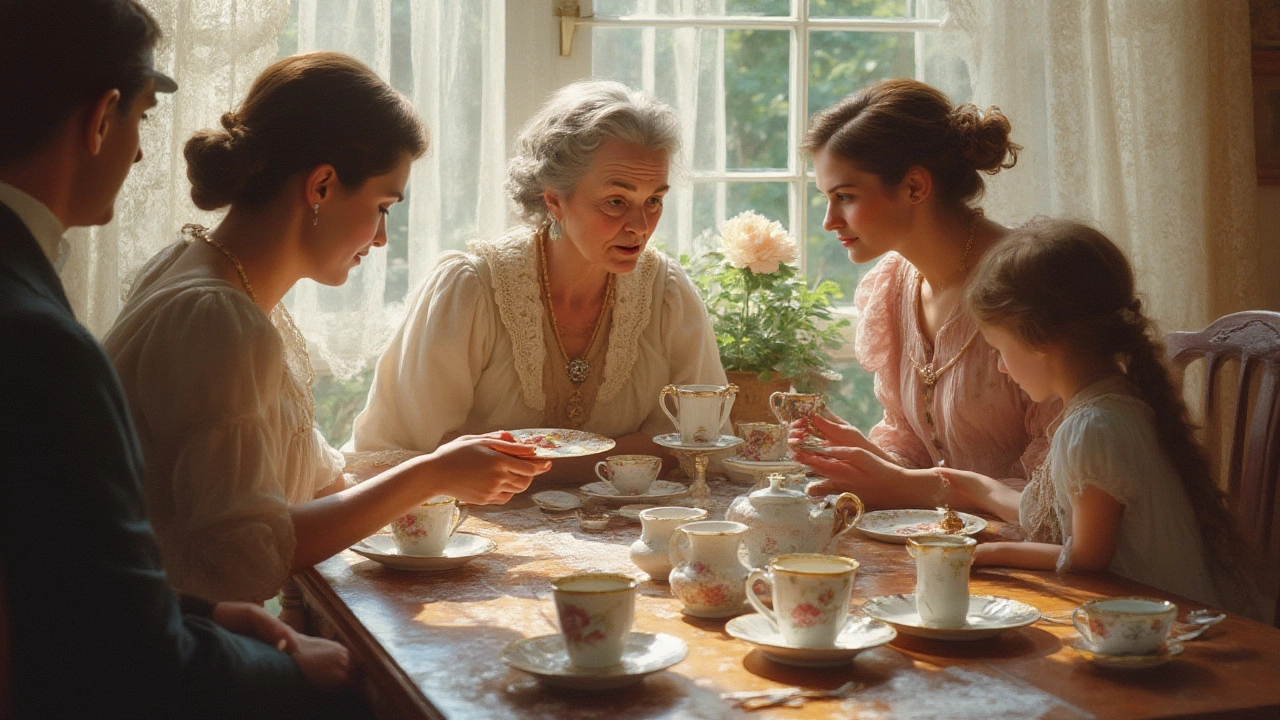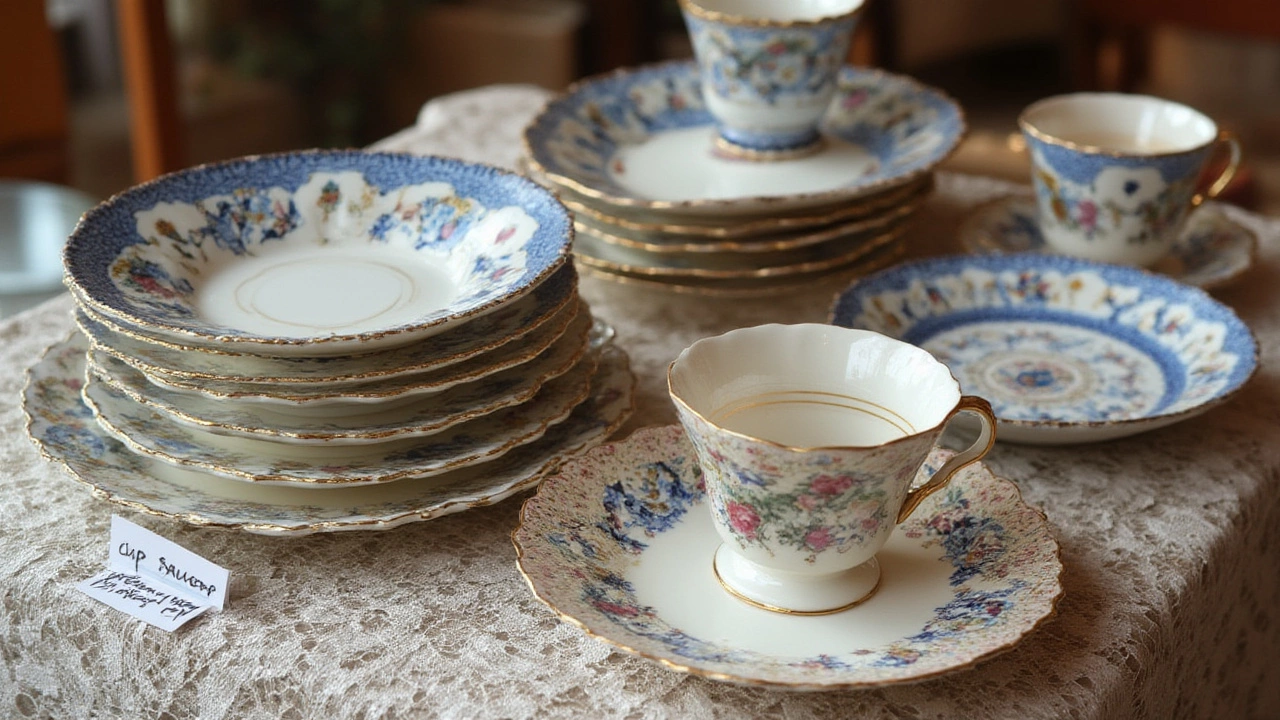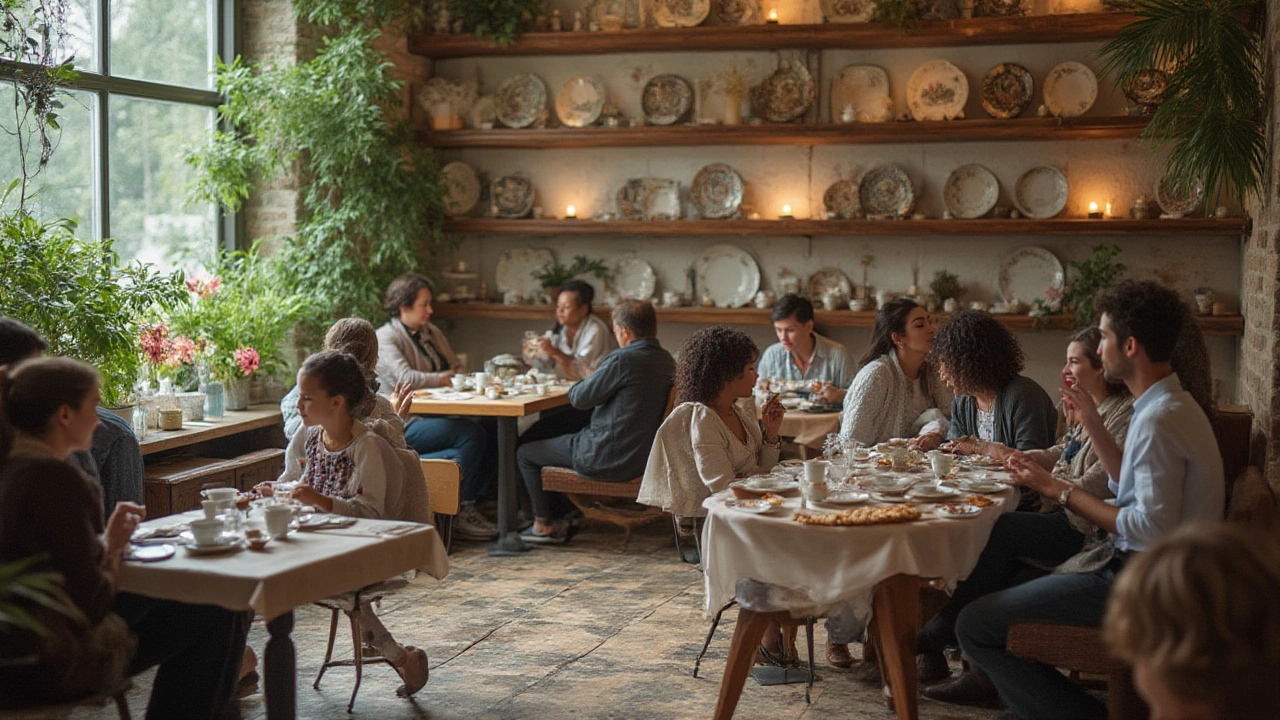Cup Plate: Alternative Names, History, and Modern Use Explained
 Jul, 9 2025
Jul, 9 2025
The next time you pick up your teacup, odds are you won’t worry about where to set it. These days, people barely think twice about placing cups directly on a table or using a regular saucer. But roll back about two centuries and you’d bump into a peculiar but elegant piece of tableware—the cup plate, also known as a "tea plate," "receiver," or even a "wine glass coaster" in certain circles.
What is a Cup Plate Also Known As?
Let’s get the naming out of the way. A cup plate slides under many aliases, but its roots lie in the 19th century when tea drinking became a daily ritual, not just in the drawing rooms of England but across the Atlantic in the bustling home parlors of America. The practical reason for the cup plate? Back then, people didn’t just sip tea from dainty cups; they also poured hot tea into shallow saucers to cool it down faster—a move that feels borderline scandalous now. To avoid staining their polished tables, they needed something small and decorative under the cup. Enter the cup plate.
Some called it a tea plate, which gets confusing because modern tea plates are more like dessert or sandwich plates. Others used terms like "receiver," referring to how it ‘received’ the cup, or "wine glass coaster" when used at formal dinners to catch drips from wine glasses—especially later in the 1800s. It could also be called a “rest” or, more rarely, “nappy” in American antique catalogs, though that last name is mostly forgotten. The key difference between a cup plate and a saucer? Size—cup plates are much smaller, often no bigger than four to five inches in diameter, just enough space for the cup’s base, never the spoon or extra treats.
It’s wild to think that at its peak, there were hundreds of glass factories all across the eastern United States churning out cup plates, each with their signature patterns, initials, and patriotic or floral motifs. Famed manufacturers like Sandwich Glass Company or Boston and Sandwich Glass Company were right at the center of this booming micro-industry. Cup plates even made celebrity appearances—sets featuring the faces of presidents, war heroes, and, on rare occasion, Queen Victoria herself for the Anglophile crowd. Names and uses might have shifted, but the idea stuck: keep tables spotless, show some style, and chat over tea.

The Culture and Collecting of Cup Plates
Now, why did cup plates disappear from everyday tables? Their heyday lasted from around 1827 to just after the Civil War, by which time tea habits changed, and so did the furniture. As tables grew less polished and serving more casual, nobody seemed to mind the risk of a faint ring here or there. But the story didn’t stop—collectors took up the torch. Today, cup plates are hot-ticket items for antique glassware lovers, especially American pressed glass. The collecting community gets pretty nerdy about details: is the cup plate flint glass, pressed or blown, with or without a thumbprint edge? If you ever poke around antique fairs or estate auctions, you’ll find entire tables dedicated to these tiny, ornate discs, each telling a story through a swirl of grapevines or a cameo in relief.
A quick table shows typical cup plate stats for those looking to spot (or buy) the real deal:
| Feature | Common Detail |
|---|---|
| Diameter | 4–5 inches (10–13 cm) |
| Material | Pressed glass, cut glass, porcelain |
| Common Motifs | Presidential profiles, floral, patriotic eagles, geometric |
| Production Date Range | 1827–1865 (peak years) |
| Alternate Names | Tea plate, receiver, wine glass coaster, rest |
If you’re thinking of collecting, a few tips: check for sharp mold seams (a true sign of early glass pressing), a bell-like ring if it’s flint glass, and motifs that align with known patterns from reputable glassworks. It’s almost like a treasure hunt, parsing out the real gems from clever reproductions. Some cup plates will go for just a few dollars, but rare signed examples can fetch hundreds or even more. There was a spike in interest during the 1930s when people loved nostalgia for Americana, and the hobby hasn’t faded since. Avid collectors have even published catalogs—one well-known example is by Ruth Webb Lee, who set standards on charting the wild world of cup plate varieties back in the mid-1900s. You’ll also catch some crossover—people repurpose antique cup plates as modern coasters, tealight holders, or even small jewelry trays, proving their quiet versatility.
And here’s a neat party trick: if you want to start a conversation piece at your next dinner, set out a few cup plates (the fancier, the better) for guests to use under their drink glasses. Instant intrigue—few people recognize these relics, but everyone loves a bit of quirky tableware history.

Modern Use and Care for Antique Cup Plates
You might wonder—is there any place for cup plates today? Sure, folks rarely slurp tea from a saucer, but cup plates slip right into modern life in all sorts of ways. They’re small, pretty, and oddly handy: try one under a coffee cup if your table’s seen better days, or as a base for mini desserts at a dinner party. People use them for small candles, as soap dishes, or even to hold salt cellars on fancy tables. If you snag an antique cup plate, treat it with care—pressed glass can chip fast, and a quick wash by hand (avoid dishwashers) keeps designs crisp. Porcelain ones might handle a bit more rough treatment, but anything hand-painted or with gilt edges needs kid-glove handling.
Storing cup plates? Stack with soft cloth between each piece. Glass-on-glass contact leads to scratches and chips, which instantly lower their value. Museums display prized examples on little easels so the light can play off those cut-glass or pressed patterns—something you can easily do at home with a cheap stand from the craft store. If you’re feeling extra creative, frame a batch of mismatched cup plates as wall art. It’s a sneaky way to sneak a little antique charm into rooms that might not otherwise vibe with Victorian finery.
And don’t forget the stories that come with them. Each cup plate, whether plain or festooned with an eagle or the face of Henry Clay, passed through hands at an actual 19th-century tea or dinner. That’s a legacy hiding in plain sight, right on your coffee table. Cup plates might be relics, but their mix of elegance, function, and story is downright timeless. Next time you hear the phrase "tea plate" or "wine glass coaster," you’ll know there’s a much richer tradition lurking underneath—one that’s survived wars, changing tastes, and decades hidden in dusty cupboards, only to pop back onto tables right when nobody expects it.